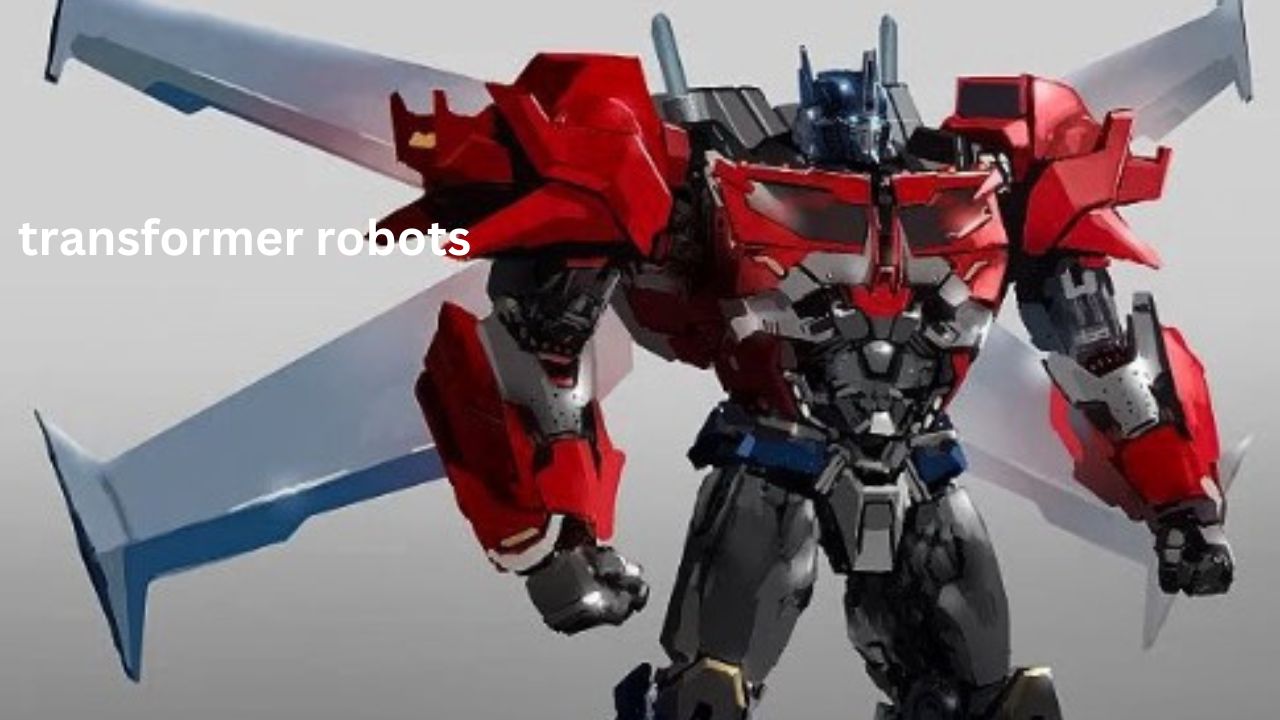Transformer Robots: A Glimpse Into the Future of Robotics
Transformer robots, inspired by the popular “Transformers” media franchise, have evolved from mere fictional characters into real-world engineering marvels. These versatile machines are designed to shift from one form to another, such as from a vehicle to a humanoid robot or from an object to a functional machine.
With advancements in artificial intelligence (AI), robotics, and mechanical engineering, they are revolutionizing industries, enhancing human abilities, and offering a new vision of automation.In this blog post, we’ll explore what transformer robots are, their key applications, the technologies behind them, and what the future holds for this groundbreaking innovation.

What Are Transformer Robots?
Transformer robots are robotic systems capable of changing their form and functionality. The concept derives its name from the popular “Transformers” franchise, where characters morph from vehicles into robots. However, the real-world application of transformer robots goes beyond entertainment, aiming for practical applications in industries like manufacturing, military, space exploration, and consumer products.
The core feature of these robots is their ability to reconfigure themselves to perform different tasks. For instance, a robot that transforms from a compact mobile unit into a larger humanoid form could be highly useful in space missions, emergency rescue operations, and industrial automation.
Types of Transformer Robots
There are various types of transformer robots, each designed for specific tasks. Some of the most popular types include:
- Shape-shifting robots: These robots change their shape to adapt to the environment or task requirements. For example, a robot can change from a walking form to a wheeled vehicle or even fly.
- Modular robots: These robots consist of individual modules that can detach or combine to form different configurations. Each module can have different capabilities, allowing the robot to perform a wider range of tasks.
- Humanoid transformer robots: These are robots that closely resemble human beings in terms of appearance and movement. They can change their shape and size depending on the situation and can be used for tasks that require human-like interaction.
- Multi-functional robots: These robots transform their tools or appendages to carry out different functions. For example, they might change from a robot with a drilling tool into one equipped for welding or cutting.
You May Also Like: You-must-need-top-15-iphone-hacks
How Transformer Robots Work
Transformer robots combine several advanced technologies to achieve their versatile capabilities. Below are the key components that make these robots functional:
- Artificial Intelligence (AI): AI is the brain behind them. With AI, these robots can learn from their environment, make decisions, and reconfigure themselves based on the tasks they need to perform. AI algorithms enable the robots to understand their surroundings and choose the most appropriate form and function for the job.
- Mechanical Engineering: The hardware behind transformer robots is equally important. Robotic systems require sophisticated mechanical designs that allow for shape-shifting without compromising structural integrity. Hinges, gears, motors, and actuators must work in harmony to enable smooth transformations. Engineers focus on building lightweight yet strong materials to facilitate these complex movements.
- Sensors and Feedback Systems: To successfully reconfigure themselves, transformer robots are equipped with sensors that gather data from their surroundings. These sensors can detect objects, measure distances, and even gauge environmental conditions. The feedback loop between the sensors and the AI ensures the robot can adjust its actions dynamically, making real-time decisions during transformations.
- Power Systems: Because transformer robots must power a wide range of functions, their energy requirements are substantial. High-capacity batteries or alternative power systems, like fuel cells, ensure these robots can operate for extended periods without needing frequent recharges.
Applications of Transformer Robots
They have already found real-world applications in various industries. Below are some of the most promising fields benefiting from this technology.
- Space Exploration: In space missions, transformer robots can adapt to varying terrains and tasks, making them ideal for exploration missions. For example, a transformer robot could navigate the surface of a distant planet as a rover and then transform into a drone to fly over obstacles or dangerous areas. NASA and other space agencies are exploring how these robots could make long-term space exploration more efficient and less reliant on human intervention.
- Military and Defense: The military has shown great interest in transformer robots for their versatility in combat and rescue operations. These robots can be used for reconnaissance missions, where they may transform into small drones for aerial surveillance, then reconfigure to handle ground-based operations like mine detection or bomb defusal.
- Emergency Response and Disaster Recovery: In disaster situations, transformer robots could help locate and rescue survivors. For instance, they can navigate through tight spaces or rubble, transforming from a small vehicle into a humanoid robot that can interact with humans. These robots can access dangerous or hard-to-reach areas where human rescuers may not be able to go.
- Industrial Automation: Transformer robots have potential applications in manufacturing and logistics. A robot could switch between handling large, heavy items and performing delicate, intricate tasks, providing flexibility in factory automation. This ability to transform on demand can reduce downtime and enhance productivity, ultimately lowering operational costs for businesses.
- Consumer Products:Though still in its infancy, there’s a growing interest in transformer robots for consumer use. Imagine a personal assistant robot that can change from a small helper into a larger, more capable machine when needed. In the future, transformer robots could become common household items, helping with chores, entertainment, and even caregiving.
Challenges in Transformer Robot Development
Despite the exciting prospects, there are several challenges that developers face in creating fully functional robots.
- Complexity of Design: Building a robot that can transform without losing efficiency or structural stability is a significant challenge. Engineers must ensure that the mechanical parts are flexible but strong, while also ensuring smooth transitions between forms.
- Power Requirements: Transformer robots need a robust energy source to fuel their transformation abilities and perform various tasks. Power efficiency and the development of long-lasting, compact energy sources are still areas that require improvement.
- High Costs: The research, development, and production of robots are expensive. Advanced materials, custom designs, and cutting-edge technologies drive up the costs, making mass production and affordability for consumers a distant goal.
- AI and Programming Limitations: While AI technology is rapidly advancing, achieving true autonomy in transformer robots still requires significant breakthroughs. Robots need to make real-time decisions and adapt to unforeseen circumstances, which can be difficult to program effectively.
The Future of Transformer Robots
The future of transformer robots looks bright, with many industries and governments investing heavily in research and development. We may soon see autonomous, shape-shifting robots handling complex tasks, replacing humans in dangerous situations, and even becoming an integral part of everyday life. As AI, mechanical engineering, and power systems continue to advance, robots will become more efficient, affordable, and widespread.

Conclusion
Transformer robots are not just science fiction anymore—they are becoming a reality, offering a glimpse into the future of robotics. Their ability to change form and function opens the door to endless possibilities in industries ranging from space exploration to manufacturing. While challenges remain, ongoing advancements in AI, engineering, and sensor technology are likely to push the boundaries of what transformer robots can do. In the not-so-distant future, these shape-shifting marvels could revolutionize the way we live, work, and explore the world around us.
Read You Have To Know: Software-engineer-aesthetic
FAQs
What are transformer robots?
Transformer robots are advanced machines capable of changing their shape and functionality. They can transform from one form, like a vehicle or object, into another, such as a humanoid robot, to perform a variety of tasks in different environments. These robots combine mechanical engineering with AI to offer flexibility and versatility in applications like space exploration, military, and industrial automation.
How do transformer robots work?
Transformer robots work by using a combination of sensors, AI, and mechanical systems. Their sensors gather data from the environment, and the AI processes this information to decide how the robot should transform or adapt. Motors, gears, and actuators then reconfigure the robot’s form, enabling it to perform different tasks according to its design.
What industries use transformer robots?
Robots are used in several industries, including space exploration, military and defense, industrial automation, and emergency response. They can navigate tough terrains, conduct reconnaissance missions, perform complex tasks in factories, and assist in disaster recovery efforts.
What are the main challenges in developing transformer robots?
Developing transformer robots poses several challenges, including the complexity of designing shape-shifting mechanisms, managing high power requirements, and maintaining structural stability during transformations. Additionally, the cost of production is high, and further advancements in AI are needed to enable robots to make real-time decisions and adapt autonomously.
What is the future of transformer robots?
The future of transformer robots looks promising. With continued advances in AI, mechanical engineering, and energy solutions, these robots could become more efficient, affordable, and capable of handling complex tasks. In the coming years, transformer robots may play key roles in fields like healthcare, logistics, household assistance, and beyond.
